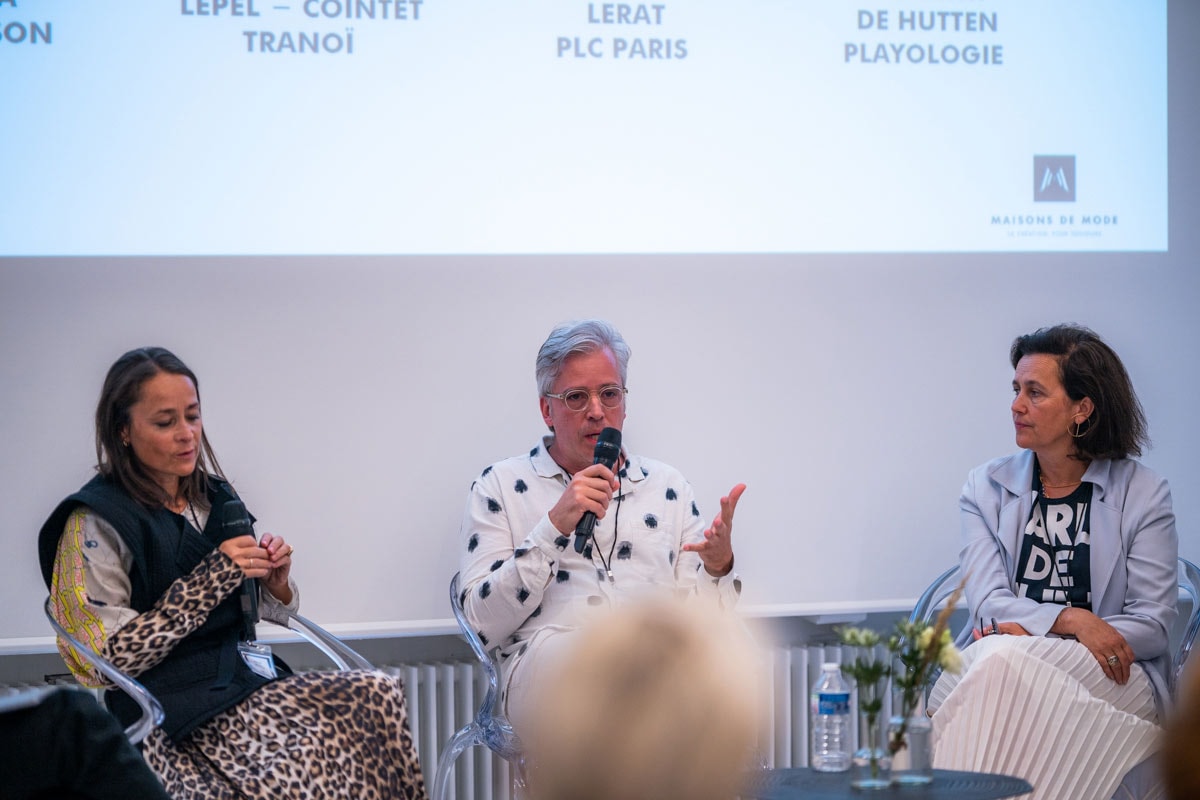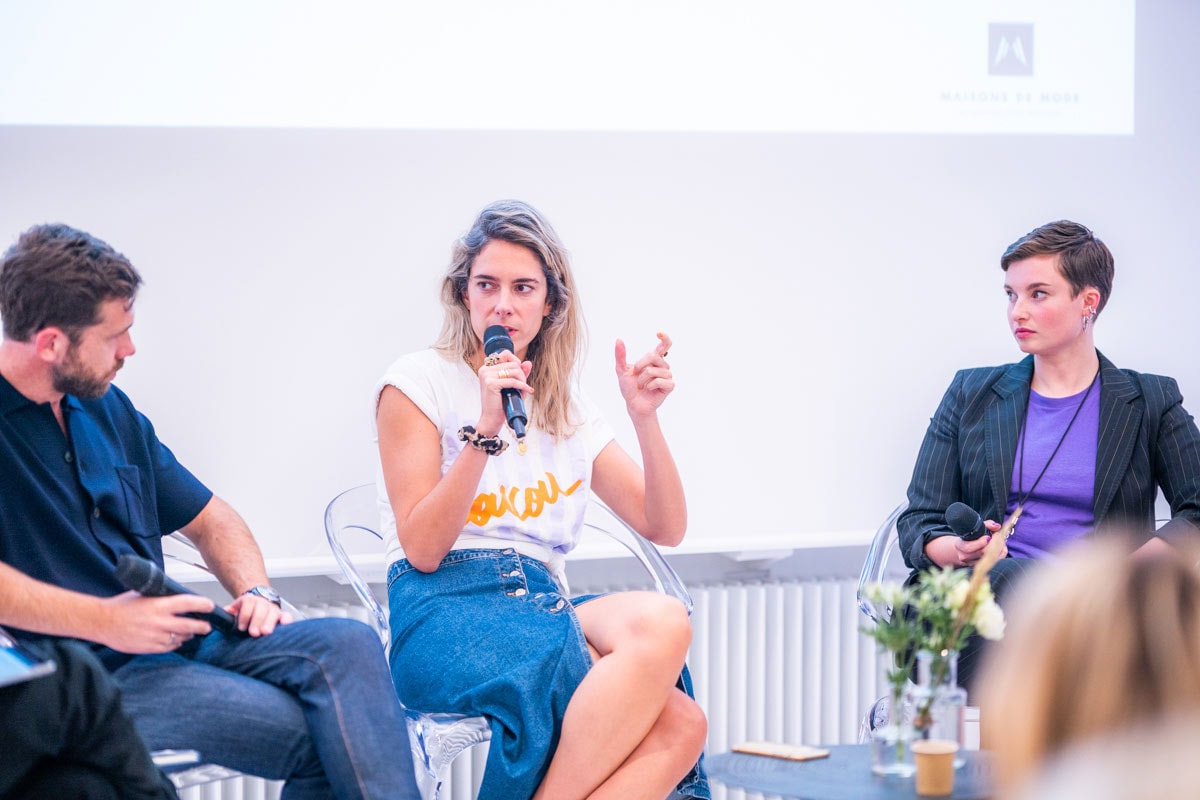
Lille, France - Maisons de Mode, a French fashion incubator that shines a spotlight on young and up-and-coming talent on the fashion scene, hosted the 11th edition of its annual fashion festival last weekend: Maisons de Mode 48h Lille.
The event, held between 12-15 September, saw 26 designers present their spring-summer 2020 collections to an audience of international buyers; the launch of the first Lille Fashion Night (a night where a select number of fashion stores in Lille’s old town opened their doors to allow the public to survey their collections with champagne in hand); and a number of panel talks led by Adrien Garcia from the podcast "Entreprendre dans la mode”.
The panel talks saw a number of industry professionals share their top tips on how up-and-coming designers and brands can make it in the heavily competitive market, covering topics such as how to tackle the tricky problem of distribution, and how to effectively use social media to promote yourself.
These are five of FashionUnited’s takeaways from the talks:
1. Have a strong brand DNA
To get ahead, particularly when it comes to the distribution stage, you really need to build a strong brand DNA, that’s according to Sébastien de Hutten, founder of French virtual showroom, Playologie. “Being very honest about it, you need to put brand DNA first, it needs to be very clear and you need to be able to define what your brand is really about in just three sentences,” he said. “From there, everything is much easier.”
When it comes to trade shows, the key is to be pragmatic, you have to attend them and find your niche, de Hutten continued. “You need to go to the shows because only there will you really understand whether you belong, only by going will you be able to say ‘okay, this is my home’”, he said. “Each brand needs to question themselves as to what their DNA is, go to showrooms and see which one feels most intune with that DNA.”

2. Do your homework:
But when it comes to attending showrooms and trade shows, it’s also critical that you come prepared, de Hutten stressed. “Everyone really needs to do their homework. You’re not going to meet the same buyers at one place that you’d meet at another, so you need to study what’s going on at each of those places and know if those different buyers are the ones you’re targeting.”
Diane Lepel-Cointet, marketing and communication director at French B2B fashion trade show Tranoï agreed. For her, it is important that brands arrive at her trade show prepared. “I would say maybe the most important criteria is that the designer is ready. They have to be ready in terms of their collections, in terms of price, in terms of delivery.”
If a designer comes unprepared, and can’t deliver on all these things, then they might be in for a surprise. “They risk not being able to deliver, and will end up being disappointed because then they spent the money for nothing,” she added.
“I mean, we’re talking about a long-term process here, so we need to identify the designers who are ready with their team - with their financial team, too - because they need to get a return on investment, that’s the goal.”
3. Be multichannel, combine physical and digital
“It is really important now for designers to have a combination of offline and online,” said Patricia Lerat, CEO and founder of PLC Paris, a fashion consultant and brand development company. “I think it is very hard for a showroom to transfer their model to online. I think even shows like Who’s Next and Premier Classe should have done this already 10 years ago,” she added. “But now I think it is incredibly important for designers when you launch your brand and you’re trying to find an exhibition or a showroom is important to have it in combination with a website.”
Instagram, according to Lerat, is another way the need for brands and designers to go digital has increased dramatically in recent years. Buyers, for example, are taking to the social media platform to reach out to designers and brands.
De Hutten added that while he appreciates the need for physical events such as trade shows and showrooms, he stressed that the importance of digital alternatives should not be overlooked. In 2016, De Hutten, who runs the Parisian childrenswear trades how Playtime, launched his showroom, Playologie, after noticing a gap in the market for buyers who couldn’t attend his events, whether it be for financial, geographical or other reasons.
Online platforms such as these allow buyers to access the marketplace all year round in several languages (Playologie is in eight). But de Hutten continues to stress the importance of still having an offline presence, and says he still advises people to do trade shows or showrooms. “I have been running an online platform for several years, and in the last six months it has been tremendously picking up as everybody understands how obvious it is nowadays that nothing can work only offline,” he said. “There needs to be an alliance between offline and online; the physical and the digital.”
1. Use social media to show your identity
The popularity of social media as a way to advertise your brand has skyrocketed in recent years. Justine Clenquet, founder of her eponymous jewellery brand, said Instagram has been a particularly valuable tool, allowing jer to reach new customers and engage with her current ones. But to be successful in using it you have to embrace and reflect your brand's identity. “I think you need to stay true to your brand on social media, you must be authentic. Everytime you insert new content it has to represent that identity of the brand,” she said.
Alexandre Remise from lifestyle and accessories brand Mathilde Cabanas agrees. She said that in fact it was partly through growing an Instagram account for the brand and building a community that it truly found its identity. “You know as a brand what makes you different, what your identity is. That’s really important to show through whichever social media platform you choose to use,” she said. “You often hear the phrase ‘Instagram versus real life’ - well for us Instagram is real life.”
“Our strategy is to have no strategy,” she continued reffering to social media, explaining that unplanned and sporadic posts more effectively reflected the spontaneous and fun identity of the Mathilde Cabanas brand.

Use multiple platforms
It seems that Instagram is the powerhouse when it comes to advertising fashion online these days, but the speakers were keen to emphasise the importance of using multiple platforms to engage with audiences. They recommended designers to not neglect platforms such as competing social media sites, newsletters, paid adverts, and word of mouth, which in Clenquet’s case had been a particularly valuable means of promoting her namesake brand.
“It’s great now with the new Instagram checkout feature which lets you pay directly from the app, because the quicker it is for a customer to make a payment, the more likely it is that you won’t lose them,” Remise said. “But you should never rely too heavily on one platform because you don’t know what might happen. It’s important not to put all your eggs in one basket.”
She recommended using newsletters with vouchers or offers - like early access to product launches - to keep your audience interested in your different platforms.
Photos credit: Sébastien Gras
* This article was originally published here
No comments:
Post a Comment